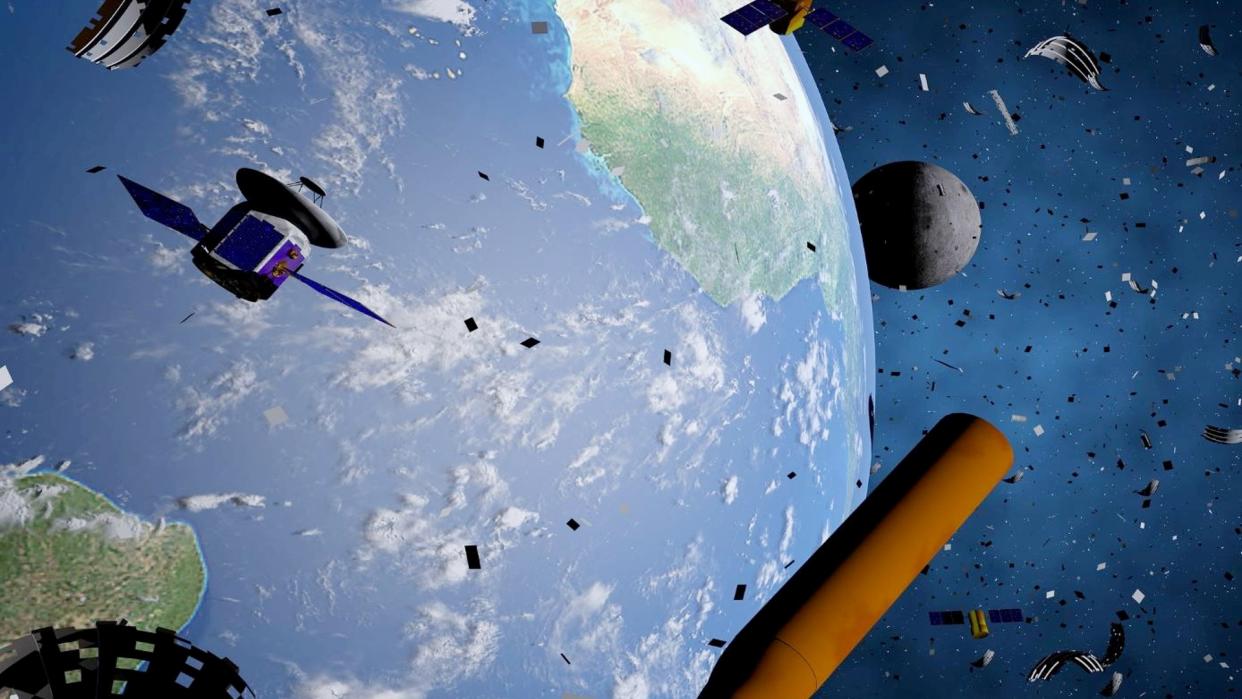India aims to achieve 'debris-free' space missions by 2030

In late March, the Indian Space Research Organisation (ISRO) announced that one of its satellite missions "practically left zero debris in orbit" after a spent rocket stage was lowered to burn up in Earth's atmosphere during re-entry.
Similar deorbiting techniques will be used to make future missions "debris-free" by the end of this decade, ISRO Chairman S. Somanath said last week.
"Over the years, sufficient skill has been developed within ISRO in dealing with topics related to debris management," Somanath said in a session hosted by the Inter-Agency Space Debris Coordination Committee (IADC), whose 13 members include all major spacefaring nations. "We want to make sure that for all the spacecraft we are likely to launch in the future, we will be taking action to make sure that we de-orbit and bring it to a safe location."
Related: Kessler Syndrome and the space debris problem
India currently has 54 spacecraft in orbit excluding non-functional satellites, of which 13 were deorbited for reentry into Earth's atmosphere last year. In February, an Earth-observation satellite named Cartosat-2 that ISRO had launched in 2007 was lowered for a controlled atmospheric reentry over the Indian Ocean, and all major parts of the satellite were predicted to vaporize during the event.
This may not always be the case. It's hard to predict whether a certain satellite will completely burn up during reentry, and scientists are realizing that more objects survive the journey to the surface than previously thought. Just last month, for example, a piece of debris from a pallet of used batteries thrown overboard from the International Space Station — trash that NASA predicted would burn up completely — slammed into a home in Florida.
Low Earth orbit is littered with about 30,000 objects larger than a softball and millions smaller than a centimeter, which circle Earth at speeds reaching 10 times that of a bullet. Spent rocket stages and dead or malfunctioning satellites abandoned in their orbits around Earth have been the primary source of space junk due to collisions and accidental explosions, prompting space agencies and private companies to lower their satellites intentionally for atmospheric reentries.
RELATED STORIES:
— Facts and information about ISRO, the Indian Space Research Organisation
Even as a million more satellites are predicted to head to LEO in the coming years, questions persist about the environmental impacts of burning up satellites in Earth's atmosphere. A bombshell study last October found unexpectedly high amounts of vaporized metals polluting Earth's stratosphere, which is home to the fragile ozone layer, whose chemical makeup can be altered by satellite material. Another study posted to the preprint server arXiv last December suggested that debris from burning satellites could in some ways be messing with our planet's magnetic field.
"We're surrounding the planet with trash," Sierra Solter-Hunt, an American physicist and doctoral candidate at the University of Iceland who wrote the December study, previously told Space.com. "There will be more and more of it, and it's going to create some different chemical reactions, and we have basically no understanding of it."

